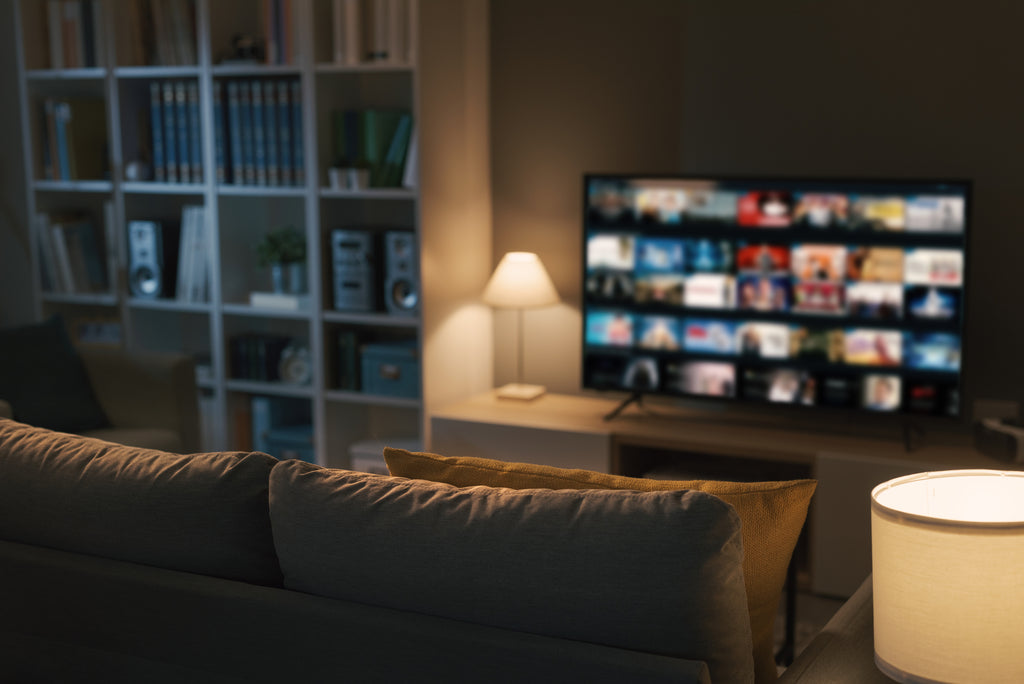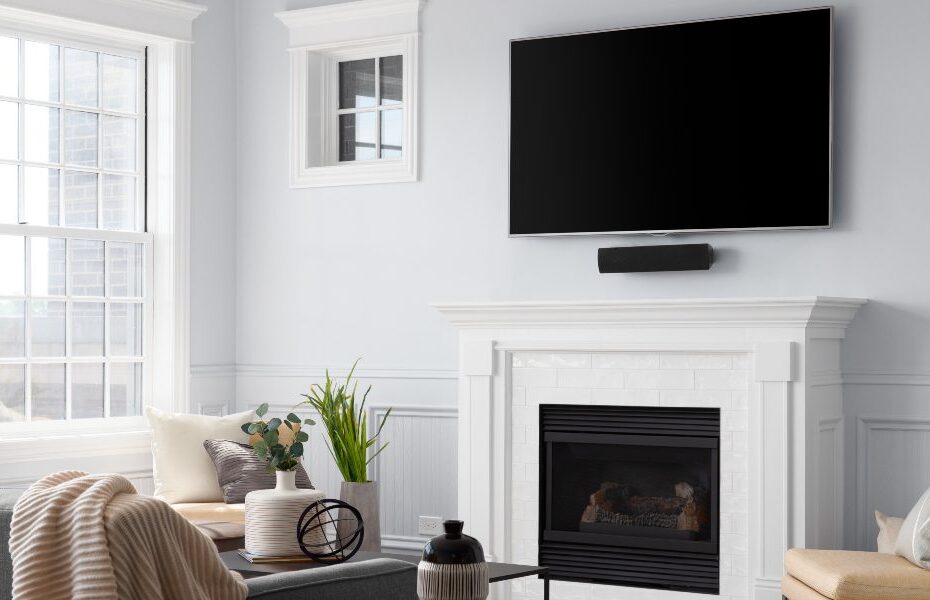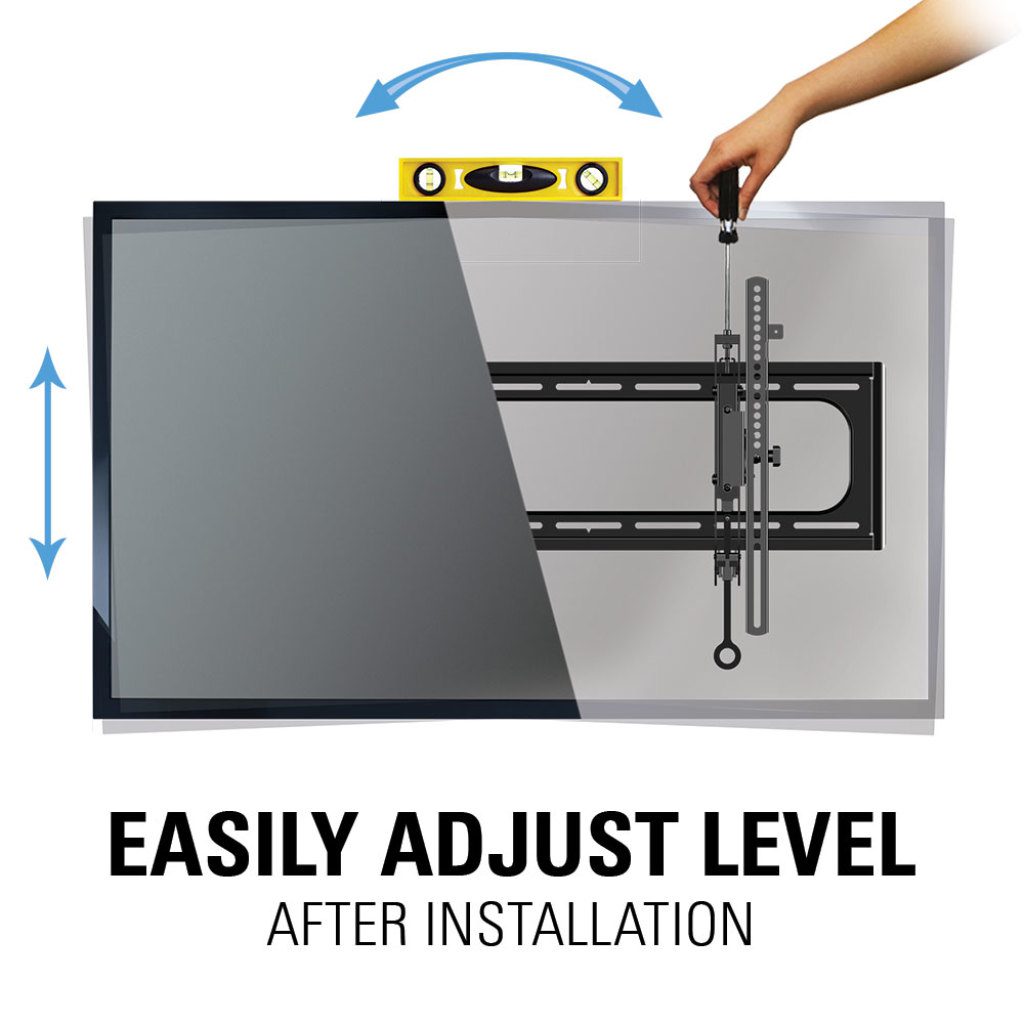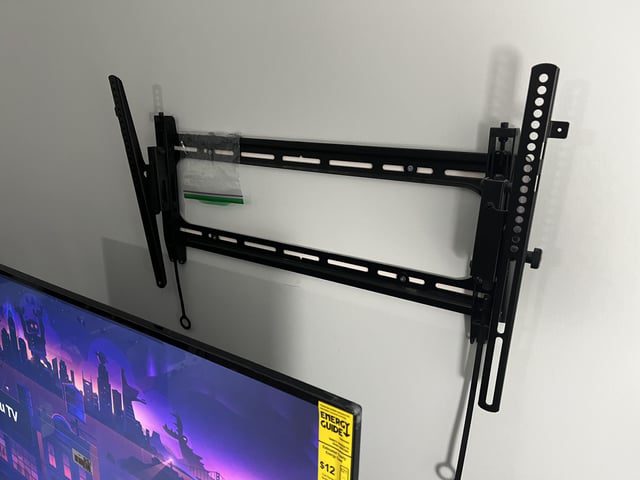A TV should be mounted at eye level for optimal viewing experience, which typically ranges between 42 to 56 inches from the floor. Having your TV mounted at the right height can significantly enhance your viewing comfort and overall entertainment experience.
Improper TV placement can strain neck and eye muscles, leading to discomfort and fatigue. Ideally, the optimal height to mount a TV is at eye level, which typically ranges between 42 to 56 inches from the floor. By mounting your TV at eye level, you can maintain a more natural viewing angle, reducing the strain on your neck and eyes.
Whether you’re mounting your TV in the living room, bedroom, or any other space, ensuring the correct height will maximize your enjoyment and minimize any potential discomfort.

Credit: www.youtube.com
Importance Of Proper Tv Mounting
Proper TV mounting is crucial to provide optimal viewing experience. When determining how high a TV should be mounted, consider factors such as eye level and room layout to ensure comfortable and immersive entertainment.
Proper TV mounting is crucial for an optimal viewing experience, as it directly affects the comfort and enjoyment of watching your favorite shows and movies. Mounting your TV at the right height ensures an ideal viewing angle, prevents neck strain, and maximizes audio performance. Understanding these factors will help you make the most out of your television setup.
Ideal Viewing Angle
Mounting your TV at the ideal viewing angle is essential for a comfortable and immersive experience. The recommended eye level for most viewers is about one-third of the screen’s height from the floor. This positioning allows for a natural and relaxed neck position, preventing any strain or discomfort while watching for long periods.
Preventing Neck Strain
Improper TV mounting height can result in neck strain, which can be uncomfortable and often leads to fatigue. When the TV is mounted too high, viewers tend to look up at the screen, putting excessive strain on the neck muscles. Mounting your TV at the appropriate height ensures that your neck remains in a neutral position, reducing the risk of strain and discomfort.
Maximizing Audio Performance
Proper TV mounting doesn’t just enhance the visual experience but also improves the audio performance. When the TV is mounted too high, it can cause audio distortion as the sound waves disperse upwards, away from the viewers. Mounting the TV at the optimal height ensures that the audio is projected directly towards the viewers, improving clarity and creating a more immersive sound experience.
Factors To Consider
When it comes to mounting your TV, there are several factors you need to consider. These factors will help you determine the optimal height at which your TV should be placed for the best viewing experience. By taking into account the room size and layout, TV screen size, and seating distance, you can ensure that your TV is mounted at the perfect height.
Room Size And Layout
The size and layout of your room play a crucial role in determining the ideal height for your TV. For smaller rooms, a lower TV mount is recommended to maintain a comfortable viewing angle. On the other hand, larger rooms may require a higher TV mount to ensure a clear line of sight from various seating positions. Consider the dimensions and furniture placement in your room to find the optimal TV height.
Tv Screen Size
The screen size of your TV is another important factor to consider when determining the mounting height. A larger screen size typically requires a higher TV mount to avoid straining your neck or eyes. Smaller screen sizes, on the other hand, may be mounted at a lower height for a comfortable viewing experience. Take note of your TV’s screen size and adjust the mounting height accordingly.
Seating Distance
The distance between your seating area and the TV also affects how high you should mount your TV. The general rule of thumb is to mount the TV at eye level when you are seated in your usual viewing position. Measure the distance between your seating area and the desired TV placement and adjust the height accordingly. This ensures that you don’t have to strain your neck or eyes to view the screen.
Recommended Mounting Heights
The recommended mounting heights for a TV installation depend on various factors such as viewing distance, room size, and personal preference. It is generally recommended to mount the TV at eye level, ensuring comfortable viewing without straining the neck or eyes.
Consulting a professional for guidance can help determine the ideal height for your specific setup.
In order to fully enjoy your TV viewing experience, it is important to mount your TV at the right height. The height at which you mount your TV can greatly impact your comfort and the overall aesthetics of the room. To help you make an informed decision, we have outlined the recommended mounting heights for different scenarios.Eye Level Placement
For optimal viewing comfort, it is generally recommended to mount your TV at eye level. This ensures that you don’t strain your neck and that you can easily view the screen without having to constantly tilt your head up or down. To determine the perfect eye level placement, sit in your usual viewing spot and measure the height from the floor to your eye level. Ideally, the center of the TV screen should be aligned with your eye level.Above Fireplace Considerations
Mounting your TV above the fireplace can be a popular choice for many homeowners. However, there are a few important considerations to keep in mind. The heat generated by the fireplace can potentially damage your TV, so it is crucial to ensure proper ventilation and insulation. Additionally, mounting your TV too high above the fireplace can strain your neck and make viewing uncomfortable. As a general guideline, the bottom edge of the TV should be positioned at least 4 feet from the floor, allowing for a comfortable viewing experience.Mounting In Bedrooms Or Kitchens
When it comes to mounting a TV in bedrooms or kitchens, the mounting height can be slightly different compared to living rooms. In bedrooms, it is common to mount the TV slightly higher than eye level to accommodate watching from bed. However, it is important to find a balance between comfort and aesthetics. For kitchens, considering how the TV will be viewed while cooking or sitting at the island is crucial. Mounting the TV at a height that allows for easy viewing without obstructing your line of sight is recommended. Table: Recommended Mounting Heights| Room | Recommended Mounting Height |
|---|---|
| Living Room | Align center of the screen with eye level |
| Bedroom | Slightly higher than eye level |
| Kitchen | Position for easy viewing without obstructing line of sight |
| Above Fireplace | Bottom edge of the TV at least 4 feet from the floor |

Credit: www.mantelmount.com
Alternative Mounting Options
When it comes to mounting your TV, there are alternative options that can enhance your viewing experience and make your space more versatile. In this article, we will explore three alternative mounting options: Tilting and Swiveling Mounts, Ceiling Mounted TVs, and Mounting TVs in Corners.
Tilting And Swiveling Mounts
Tilting and swiveling mounts are a popular choice for those who want the flexibility to adjust their viewing angle. These mounts allow you to tilt the TV up or down, as well as swivel it left or right. With a tilting mount, you can avoid glare from windows or lights, ensuring optimal viewing conditions.
Swiveling mounts, on the other hand, offer the convenience of being able to adjust the TV to different seating areas in the room. This is especially useful if you have an open floor plan or multiple seating arrangements. Whether you’re watching TV from the sofa or the dining table, a swiveling mount ensures that everyone has a great view.
Ceiling Mounted Tvs
If you’re looking for a unique and space-saving option, consider mounting your TV from the ceiling. Ceiling mounted TVs are not only aesthetically pleasing, but they also free up valuable wall space. This is particularly beneficial in small rooms or if you have limited wall surfaces.
Another advantage of ceiling mounted TVs is the ability to achieve the optimal viewing height. It allows you to position the TV at eye level, creating a comfortable and immersive experience. Additionally, ceiling mounts are ideal for rooms with unconventional layouts or when you want to showcase a TV in a non-traditional space, such as above a fireplace or in a home gym.
Mounting Tvs In Corners
Mounting your TV in a corner can be a practical and space-efficient solution. It allows you to utilize unused areas and keeps the TV out of the way, especially in rooms where wall space is limited. Additionally, corner mounts provide an optimal viewing angle, ensuring that you can comfortably see the screen from different spots in the room.
When mounting a TV in a corner, it’s important to choose a mount that allows for flexibility. Look for a mount that has a wide range of motion, such as tilting and swiveling, to ensure the best viewing experience. By utilizing the corner space, you can maximize the functionality of your room and create a visually pleasing setup.
Installation Tips And Best Practices
When it comes to mounting your TV, there are several important installation tips and best practices to keep in mind. By following these guidelines, you can ensure a secure and reliable mount, effectively manage your cables, and even decide if you should hire professional installers.
Ensuring Secure Mounting
Ensuring that your TV is securely mounted is crucial for both the safety of your device and optimal viewing experience. Here are some tips to keep in mind:
- Choose the right mount: Select a mount that is compatible with your TV size and weight. Check the manufacturer’s specifications to ensure a proper fit.
- Find the right wall location: Locate the wall studs or use a sturdy wall anchor to anchor the mount securely. This will provide the necessary support for your TV.
- Use the right tools: Invest in quality tools such as a stud finder, level, and power drill to assist with the installation process. These tools will ensure precise measurements and secure attachments.
- Follow the instructions: Read the manufacturer’s instructions carefully and follow them step-by-step for a successful installation. This will help you avoid any potential mishaps.
Managing Cables
Managing the cables connected to your TV is not only important for aesthetics but also for safety reasons. Here are some tips to effectively manage your cables:
- Use cable management solutions: Invest in cable management solutions such as cable clips or sleeves to keep your cables organized and tangle-free. This will help maintain a clean and clutter-free appearance.
- Hide cables behind the wall: Consider running cables through the wall to conceal them completely. This can be done with the help of an in-wall cable management kit, ensuring a neat and seamless installation.
- Label your cables: Use labels or color-coding to identify each cable, making it easier to troubleshoot or make changes in the future.
- Leave some slack: When connecting your TV to other devices, leave some slack in the cables to accommodate any future adjustments or movements of the TV.
Hiring Professional Installers
While mounting a TV can be a DIY project, hiring professional installers can provide several benefits:
- Expertise: Professional installers have the knowledge and experience to safely and efficiently mount your TV, ensuring it is properly secured.
- Save time and effort: Installing a TV can be a time-consuming and physically demanding task. By hiring professionals, you can save time and focus on other important matters.
- Clean and seamless installation: Professional installers can ensure a clean and seamless installation, minimizing any visible cables and providing a polished look.
- Expert advice: Professionals can provide you with expert advice on the best location and height to mount your TV, ensuring optimal viewing angles and reducing strain on your neck and eyes.
:max_bytes(150000):strip_icc()/how-high-to-mount-your-tv-5195071-hero-82125cc23f7346b0a5d9a654a4c59740.jpg)
Credit: www.thespruce.com
Frequently Asked Questions For How High Should A Tv Be Mounted
What Is The Proper Height To Hang A Tv?
The proper height to hang a TV depends on the size of the screen and the viewing distance. As a general rule, the center of the screen should be at eye level when seated. For a comfortable viewing experience, aim for a height where the bottom of the screen is 42-48 inches from the floor.
What Is The Best Height To Put Your Tv?
The best height for your TV is at eye level when seated, typically around 42 inches from the floor. This ensures comfortable viewing and reduces strain on the neck.
Can A Tv Be Too High On Wall?
Mounting a TV too high on the wall can strain your neck and make viewing uncomfortable. Ensure proper eye level alignment for a comfortable and enjoyable viewing experience.
What Is The Best Height For A 55-inch Tv?
The best height for a 55-inch TV is around eye level when you are seated comfortably. Placing it too high or too low can strain your neck and eyes. Ensure the center of the TV is aligned with your eyes for optimal viewing experience.
Conclusion
Considering the mounting height for your TV is crucial for a comfortable viewing experience. By following the recommended guidelines, you can ensure optimal eye level alignment and reduce strain or discomfort. Remember to consider factors like room size, seating arrangement, and personal preference.
So, whether it’s for your living room or bedroom, a properly mounted TV will enhance your overall viewing pleasure. Happy watching!
- Unleash the Potential: Exploring the World of Ceiling TV Mounts - February 15, 2024
- How to Mount a Tv on a Swivel Stand - February 15, 2024
- How to Hang Tv Outside - February 14, 2024


